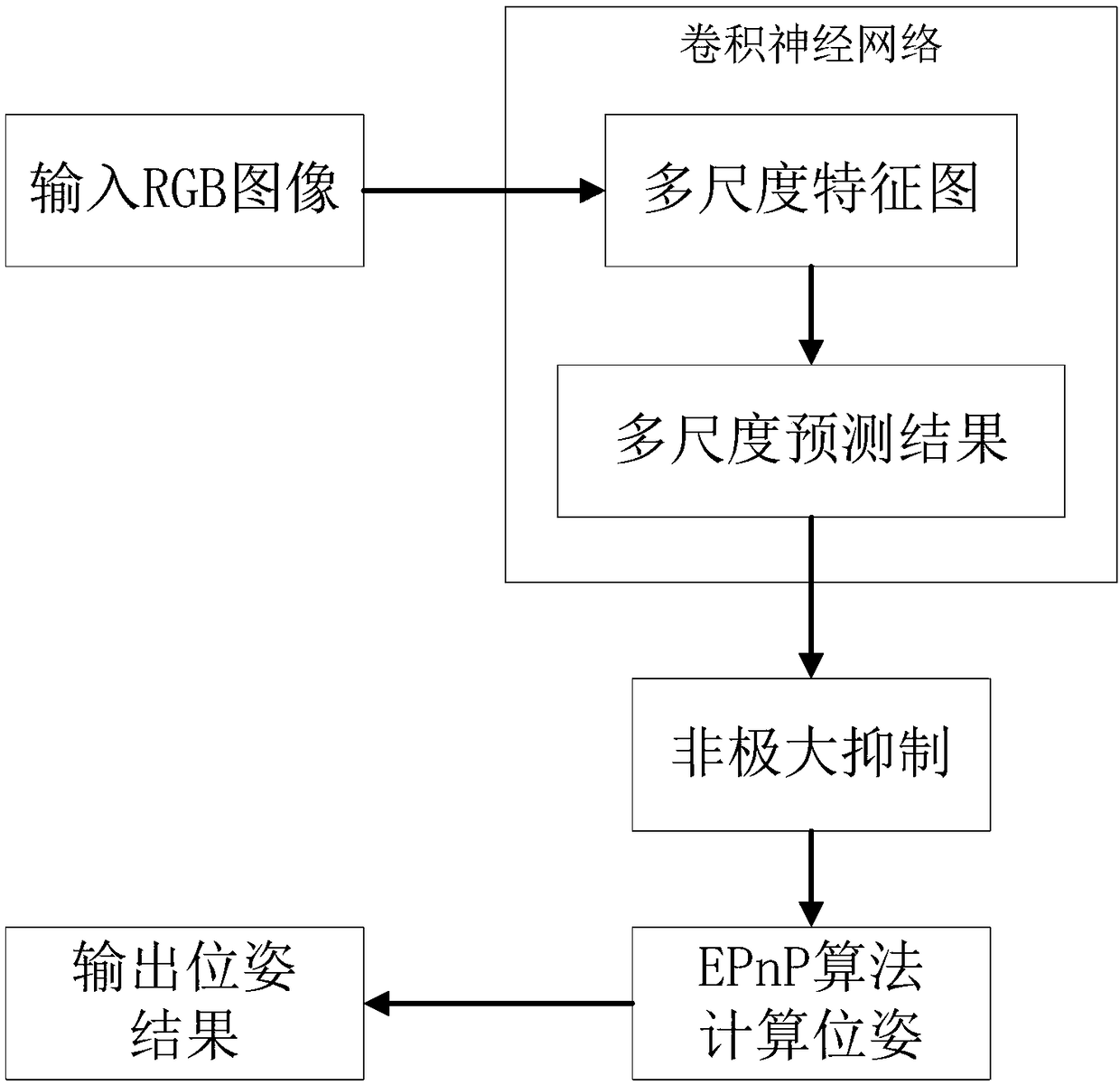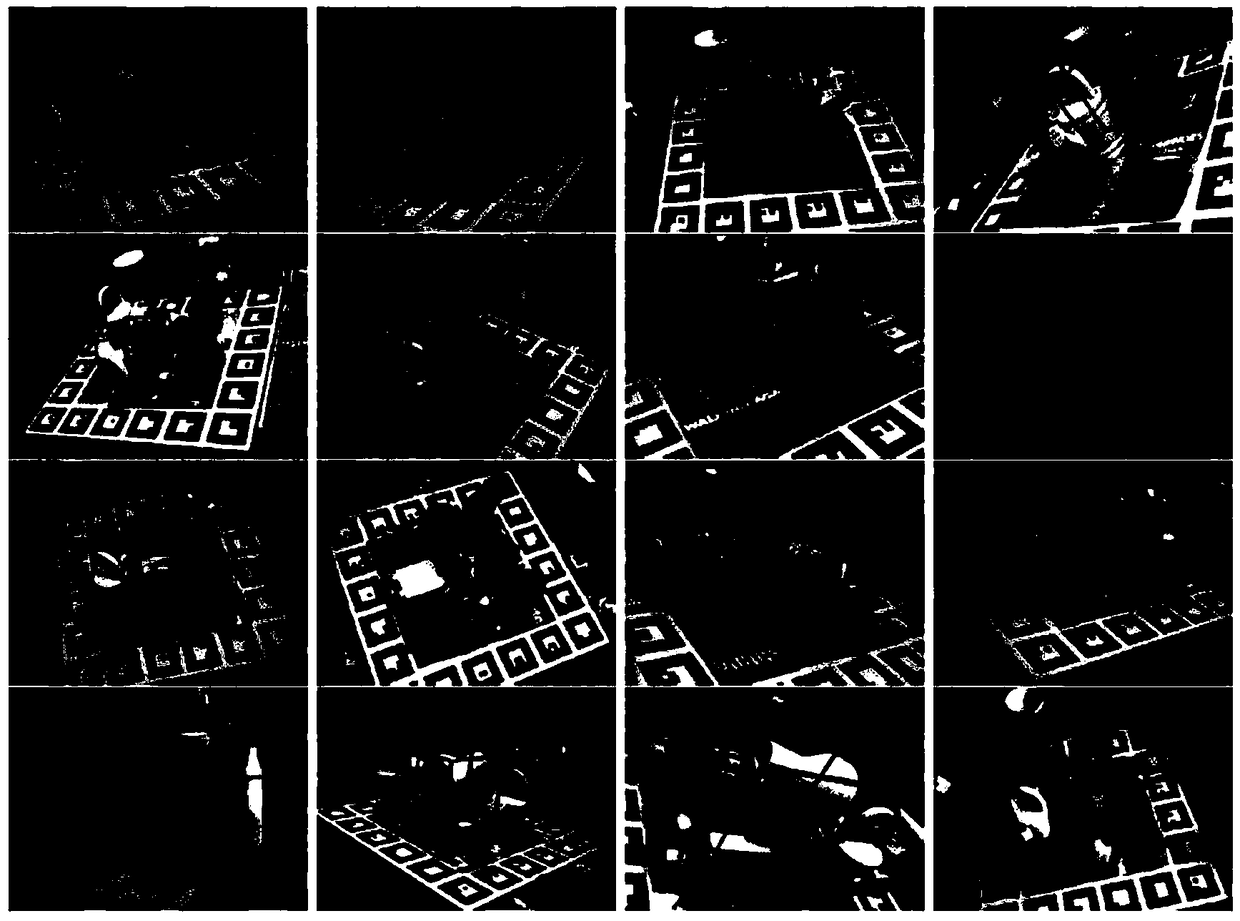Six-degree-of-freedom pose estimation algorithm based on projection point coordinate regression
A pose estimation algorithm and projection point technology, applied in computing, image data processing, instruments, etc., can solve the problems of increased algorithm running time, slow algorithm running speed, and inability to comprehensively optimize the pose estimation target, and achieve real-time Processing, saving running time, improving computational efficiency and the effect of pose estimation accuracy
- Summary
- Abstract
- Description
- Claims
- Application Information
AI Technical Summary
Problems solved by technology
Method used
Image
Examples
Embodiment Construction
[0065] The following will clearly and completely describe the technical solutions in the embodiments of the present invention with reference to the accompanying drawings in the embodiments of the present invention. Obviously, the described embodiments are only some, not all, embodiments of the present invention. Based on the embodiments of the present invention, all other embodiments obtained by persons of ordinary skill in the art without making creative efforts belong to the protection scope of the present invention.
[0066] The embodiment of the present invention discloses an end-to-end trained convolutional neural network algorithm for six-degree-of-freedom pose estimation, so that all parameters in the network are comprehensively optimized for the pose estimation target. Compared with the prior art BB8 The multi-step processing method of the algorithm can improve the accuracy of pose estimation while improving the computational efficiency.
[0067] The comparison results...
PUM
 Login to View More
Login to View More Abstract
Description
Claims
Application Information
 Login to View More
Login to View More - R&D
- Intellectual Property
- Life Sciences
- Materials
- Tech Scout
- Unparalleled Data Quality
- Higher Quality Content
- 60% Fewer Hallucinations
Browse by: Latest US Patents, China's latest patents, Technical Efficacy Thesaurus, Application Domain, Technology Topic, Popular Technical Reports.
© 2025 PatSnap. All rights reserved.Legal|Privacy policy|Modern Slavery Act Transparency Statement|Sitemap|About US| Contact US: help@patsnap.com



